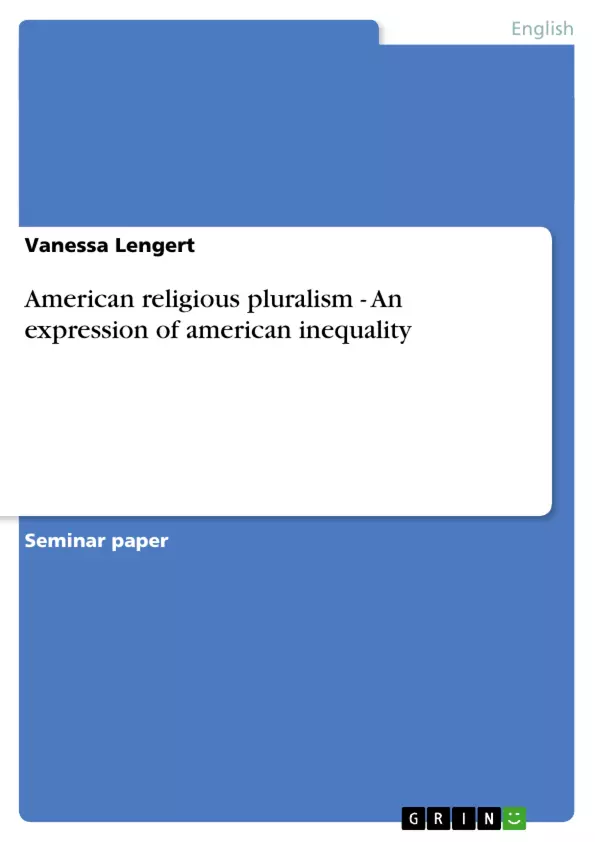Die Arbeit gibt einen kurzen Überblick über die religiöse Geschichte der USA, sowie über die größten religösen Gruppen, die heute dort zu finden sind. Hauptthema der Arbeit ist, wie sich Religion auf das Konzept der Gleichheit der Amerikaner auswirkt.
America from earliest history on seemed to be a place of freedom for many people. Freedom in regard to endless space, freedom in regard to unbelievable business opportunities, but also freedom in religious terms.
America’s first settlers, the Puritans, were in search of a place where they could follow their religion in a free way, and so at first sight helped to created a place where this was possible, the United States of America. Millions of people followed them in the course of time. Religious Freedom was from earliest history one of the major pull factors that made people come to America, as it was also explicitly guaranteed in the First Amendment to the Constitution:
Congress should make no law respecting an establishment of religion, or prohibiting the free exercise thereof.
However, since the Constitution was ratified a few hundred years have passed, and in the meantime millions of people have accepted the promise of religious freedom made by the government. Today America is a multireligious place, in which all religions should at least theoretical be equal. But its Christian roots in modern times are made more obvious than ever. So, for example, in 1954 the Pledge of Allegiance was supplemented with the phrase “under God”:
Inhaltsverzeichnis (Table of Contents)
- Introduction
- Religion in America
- History of those "who brought religion"
- One Nation under God
- The Nation's Religion?
- The white man's religion
- Religious Pluralism
- Religious groups
- Roman Catholicism
- Judaism
- Islam
- Native American Religion
- Hindu
- Buddhism
- Religious Inequality
- Conclusion
Zielsetzung und Themenschwerpunkte (Objectives and Key Themes)
This paper aims to examine the development of religious pluralism in the United States, tracing its roots from early American history to the present day. It will explore the tension between the country's Christian heritage and its commitment to religious freedom, ultimately questioning whether true religious equality exists in modern America.
- The historical development of religious pluralism in the US
- The interplay between Christianity and religious freedom in American society
- The impact of the Pledge of Allegiance on religious pluralism
- The challenges to religious equality in modern America
- The evolving role of government in shaping religious attitudes
Zusammenfassung der Kapitel (Chapter Summaries)
The first chapter introduces the concept of religious freedom in early America, focusing on the role of the Puritans and the First Amendment to the Constitution. Chapter 2 provides a historical overview of the diverse religious groups that have shaped American society. Chapter 3 delves into the increasing prominence of Christianity in American culture, exemplified by the addition of "under God" to the Pledge of Allegiance.
Schlüsselwörter (Keywords)
Religious pluralism, religious freedom, Christianity, American history, inequality, Pledge of Allegiance, First Amendment, Puritans, religious groups, government influence.
- Citar trabajo
- Vanessa Lengert (Autor), 2006, American religious pluralism - An expression of american inequality, Múnich, GRIN Verlag, https://www.grin.com/document/78226



